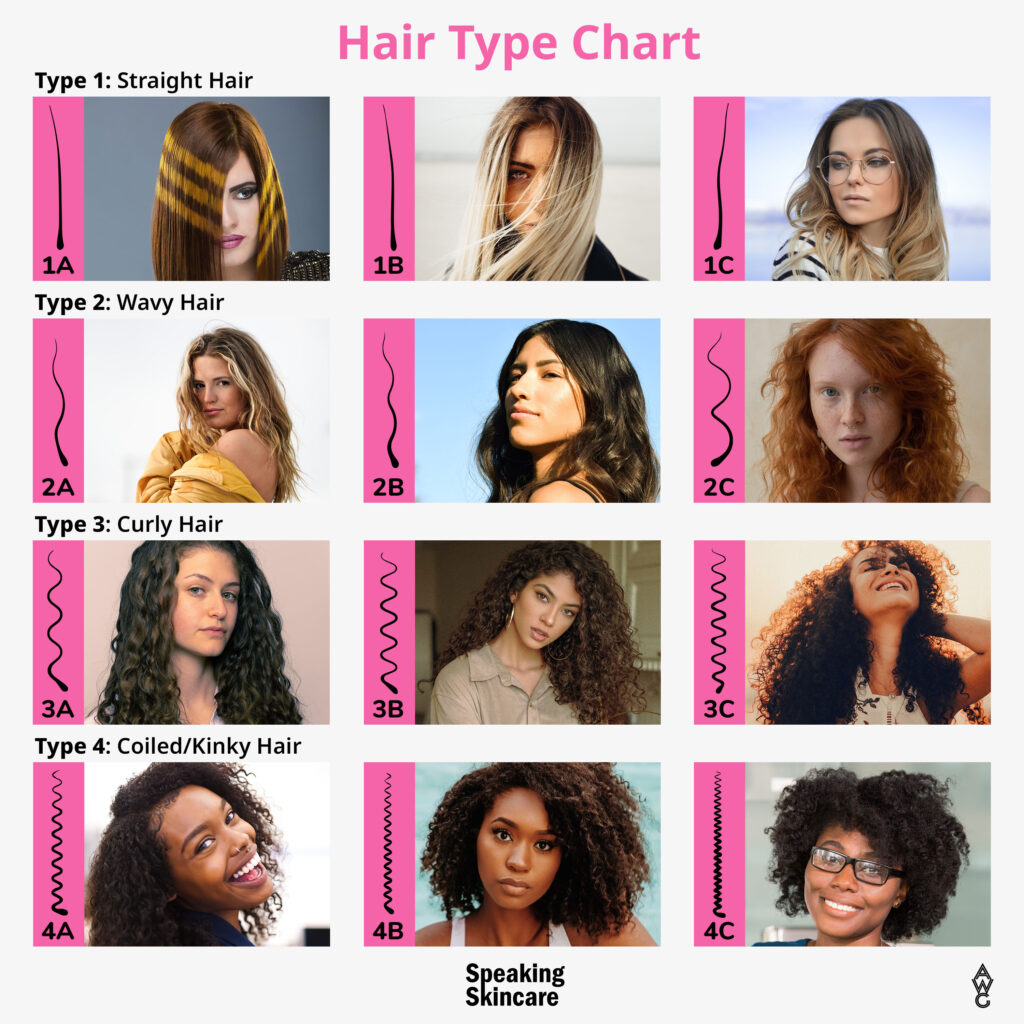If you’ve ever found yourself battling with frizzy hair, you know firsthand the struggle is real. Those flyaways, the lack of control, the constant need to smooth things out—it can be downright frustrating. But fear not, because we’re here to be your frizz-fighting heroes, armed with tips, tricks, and insider secrets to give you the luscious, silky-smooth locks of your dreams.
In this article, we’ll dive deep into the world of frizzy hair, unraveling its mysteries and helping you understand why it happens in the first place. We’ll guide you through a step-by-step journey to transform your frizz into fabulousness. From prepping your hair with the right products and techniques to styling like a pro, we’ve got you covered.
What causes frizzy hair?
So, you’ve just spent hours blow-drying and styling your hair to perfection, only to step outside and—bam!—frizz takes over like an uninvited guest. Ugh, we’ve all been there. But let’s uncover the culprits behind this unruly mess and understand what causes frizzy hair in the first place.
Humidity
One major culprit is humidity. When the moisture in the air is high, it infiltrates your precious strands, causing them to swell and frizz out like a rebellious teenager. It’s like your hair has a mind of its own, right?
Heat Damage
But wait, there’s more. Heat damage can also wreak havoc on your locks. Excessive use of hot tools, such as flat irons and curling wands, can strip your hair of its natural moisture, leaving it parched, brittle, and more prone to frizz. Ouch![1]
Natural Hair Type
Now, let’s talk hair type. Some of us are blessed with naturally curly or wavy hair, which tends to be more susceptible to frizz. The structure of these hair types makes it easier for moisture to penetrate and disrupt the hair shaft, leading to the dreaded frizz halo.

Chemical Treatments
Overprocessing your hair with relaxers, perms, or harsh dyes can weaken its structure and make it more prone to frizz and breakage. It’s important to give your hair some tender loving care after any chemical escapades.
So, as you can see, frizz can have multiple origins, from humidity and heat damage to your hair’s natural texture and even your styling routine.
Differentiating between frizz and other hair types
Alright, let’s unravel the mystery and help you differentiate frizz from other hair types. Here’s a handy checklist to guide you through the process:
- Texture: Frizzy hair tends to have a rough, coarse texture. Run your fingers through your locks, and if you feel a bit of resistance or a slightly uneven surface, you might be dealing with frizz.
- Flyaways: Those pesky little strands that seem to have a mind of their own? Yep, they’re often a telltale sign of frizz. Look for those unruly baby hairs around your hairline and crown that just won’t cooperate.
- Lack of Definition: Unlike naturally curly or wavy hair, which forms well-defined curls or waves, frizzy hair lacks that uniformity. Instead of gorgeous spirals or gentle waves, you might notice a more chaotic and undefined pattern.
- Volume: Frizz is notorious for adding some extra oomph to your hair. If you find that your hair has an abundance of volume that goes beyond your desired look, it could be a sign of frizz.
- Dryness: Frizzy hair often goes hand in hand with dryness. If your hair feels rough, straw-like, or lacks that healthy sheen, it might be due to frizz zapping away your hair’s moisture.
- Climate Sensitivity: Pay attention to how your hair reacts to different climates. If it transforms into a frizz ball at the mere mention of humidity, it’s likely frizz at play.
Remember, these are just some general pointers to help you identify frizzy hair. Everyone’s hair is unique, and there may be variations in the characteristics. But armed with this knowledge, you’ll be better equipped to understand your hair type and take appropriate steps to fight the frizz.
Prepping Your Hair for Frizz Control
Before we dive into the wonderful world of anti-frizz products, there are a few essential steps to prep your hair for ultimate frizz control. Trust me, these steps are key to laying a solid foundation for a frizz-free masterpiece. Here’s what you need to do:
- Shampoo and Condition: Start with a shampoo and conditioner specifically formulated for frizzy hair. Look for products that moisturize and hydrate your locks, because well-hydrated hair is less likely to succumb to frizz’s temptations. Gently massage the shampoo into your scalp, rinse it out thoroughly, and follow up with a generous amount of conditioner. Let it work its magic for a few minutes before rinsing.
- Deep Conditioning Treatments: Treat your tresses to some extra TLC by incorporating deep conditioning treatments into your routine. These intensive moisturizing masks or treatments provide a surge of hydration to combat frizz and restore your hair’s vitality. Apply the treatment to damp hair, focusing on the mid-lengths and ends, and leave it on for the recommended time. Rinse it out, and voila—hello, silky-smooth goodness!
- Towel Drying: After showering, resist the temptation to rub your hair vigorously with a towel. Instead, gently squeeze out excess moisture using a soft, microfiber towel or an old T-shirt. The key is to be gentle and avoid rough movements that can rough up the hair’s cuticles, leading to more frizz.
- Apply a Leave-In Conditioner or Frizz-Fighting Serum: Here comes the secret weapon—apply a leave-in conditioner or a frizz-fighting serum to damp hair. These magical potions provide an extra layer of moisture and protection, acting as a shield against frizz. Work the product through your hair, focusing on the lengths and ends, and distribute it evenly. Ah, can you feel the frizz resistance building up?
By following these prep steps, you’re giving your hair the love and attention it deserves, setting the stage for frizz-free success. Remember, hydrated and well-nourished hair is more resilient against frizz’s attempts to sabotage your style.
Calming Your Frizzy Hair With Professional Haircare Products
Let’s dive into the world of professional products that will have your locks saying goodbye to frizz and hello to sleek, smooth goodness. Here are some key types of products you should consider:
Smoothing Shampoos and Conditioners
Look for shampoos and conditioners specifically designed to smooth and tame frizz. These products are formulated with moisturizing ingredients like argan oil, shea butter, or keratin, which help nourish and hydrate your hair. They also contain ingredients that coat the hair shaft, creating a protective barrier against humidity and frizz. So, say hello to sleek and goodbye to frizz!
Anti-Frizz Serums
These little miracle workers are your secret weapon against frizz. Anti-frizz serums are lightweight, silicone-based products that work to smooth your hair, add shine, and create a protective barrier. Apply a small amount to your palms, rub them together, and then run your hands through your hair, focusing on the mid-lengths and ends. The serum will tame frizz, seal the cuticle, and leave your locks looking luscious.
Leave-In Conditioners
Leave-in conditioners are like a refreshing drink of water for your hair. These lightweight sprays or creams provide an extra boost of moisture and help keep frizz at bay throughout the day. Look for leave-in conditioners that contain ingredients like coconut oil, glycerin, or aloe vera to hydrate and nourish your strands. Apply the product to damp hair, comb it through, and get ready to enjoy the benefits of frizz-free locks.
Heat Protectants
If you’re using heat styling tools to achieve your desired look, a heat protectant is an absolute must. These products shield your hair from the damaging effects of heat and minimize frizz caused by styling. Look for heat protectants that contain ingredients like silicones, which form a protective barrier, and keratin, which helps strengthen your hair. Apply the protectant evenly throughout your hair before using any heat tools to keep your strands happy and healthy.
Remember, investing in professional haircare products can make a world of difference when it comes to taming frizzy hair. These products are specifically formulated to target frizz and provide the necessary moisture and protection your hair needs.
Natural Remedies For Getting Rid Of Frizzy Hair
If you’re looking for frizz-fighting remedies straight from Mother Nature’s pantry, we’ve got you covered. Check out these effective and wallet-friendly natural remedies that will help you bid adieu to frizzy hair.
Coconut Oil Treatment
Coconut oil is a true hero when it comes to nourishing and moisturizing your locks. Warm up a small amount of coconut oil in your hands and apply it to damp hair, focusing on the mid-lengths and ends. Leave it on for at least 30 minutes or overnight for a deep conditioning treatment. The oil penetrates your strands, providing intense hydration and taming frizz like a pro.
Apple Cider Vinegar Rinse
This age-old remedy is a game-changer for restoring your hair’s pH balance and sealing the cuticle. Mix one part apple cider vinegar with two parts water and pour it over your hair after shampooing. Let it sit for a few minutes, then rinse thoroughly. The acidity of the vinegar helps smooth the hair shaft and reduce frizz while adding shine.
Aloe Vera Gel Mask
Aloe vera is a superstar when it comes to soothing and moisturizing your hair. Mix two tablespoons of pure aloe vera gel with a few drops of your favorite essential oil (like lavender or rosemary) for added benefits. Apply the mixture to damp hair, focusing on the frizz-prone areas. Leave it on for 20 minutes, then rinse it out. Aloe vera’s hydrating properties will help calm frizz and leave your hair feeling silky-smooth.
Honey and Yogurt Hair Mask
Combine two tablespoons of honey with half a cup of plain yogurt to create a nourishing hair mask. Apply it to damp hair, starting from the roots to the ends. Let it sit for 20-30 minutes, then rinse thoroughly. The honey moisturizes and softens your hair, while the yogurt’s proteins and vitamins help control frizz and add shine.
DIY Flaxseed Gel
Flaxseed gel is a natural styling product that provides hold and reduces frizz. Boil two cups of water with two tablespoons of flaxseeds until the mixture thickens. Strain the gel using a fine sieve or cheesecloth and let it cool. Apply a small amount to damp hair, scrunching it in gently, and allow your hair to air dry. This homemade gel will help define your curls and keep frizz in check.
These natural remedies harness the power of ingredients straight from your kitchen or garden, offering effective frizz-fighting solutions. Give them a try and let nature work its magic on your locks.
Conclusion
Congrats! You’ve made it to the end of our ultimate guide to taming frizzy hair! Armed with knowledge, tips, and a range of techniques, you now have the power to bid farewell to frizz and embrace the luscious, smooth locks you’ve always dreamed of.
Throughout this journey, we’ve explored the causes of frizz, learned to differentiate it from other hair types, and discovered the importance of prepping our hair with care. We’ve delved into the world of professional products and natural remedies, all aimed at keeping frizz at bay and bringing out the best in your hair.
Remember, taming frizzy hair is a process that requires patience and experimentation. What works for one person may not work for another, so don’t be discouraged if you need to try different techniques or products to find your perfect frizz-fighting routine.
Stay hydrated, nourish your hair, and protect it from heat and environmental factors. Embrace the power of professional products and explore the wonders of nature’s remedies. With a little trial and error, you’ll discover the secret combination that makes your frizz vanish and your confidence soar.
References[+]
